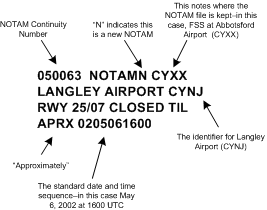A plane needs air to be able to fly. Thanks to the laws of physics, the same parcel of air can have different characteristics based on temperature and altitude. Because of this, there are a few things we have to be careful of while trying to keep that hunk of metal afloat.
Let’s take a look at some fundamental “laws” of air (and all gases for that matter), as they apply to flying:
– As altitude increases, air pressure decreases
– As air temperature increases, air pressure decreases (Gay-Lussac’s law)
– As relative humidity increases, air pressure decreases
These three items are very important because aircraft performance is based on how much air it can move over its wings at any one time. The more air (dense) the aircraft can use for propulsion and lift, the better the aircraft will perform. For this reason, we calculate pressure altitude and density altitude.
Calculating these values are key especially during take off.
To calculate at what equivalent altitude you’d be taking off from, use this formula:
(ICAO Standard Pressure – Current Station Pressure) * 1000 + Station Altitude (in feet).
Lets take a look at calculating pressure altitude at an airport that is 650′ above sea level (Buttonville) with a current station pressure of 30.23″ Hg:
(29.92″Hg – 30.23″Hg)*1000+650′ = 340′
So at 30.23″Hg station pressure, you’d be taking off from a pressure altitude of 340′. Lower altitude means denser air, which means better performance. In essence, every 0.1″Hg of pressure equates to 100′.
Now, the pressure altitude equation above assumes the stations air temperature is 15°C and dry. This is hardly the case (especially in Canada). This is why we figure out density altitude. Which is the true indication of your actual “altitude”. Calculating the density altitude can get a little complex. This is why we have our E6B calculators!
I hope that this explains why flying in the summer in Toronto is such a pain in the ass. Really hot and humid weather is not ideal flying conditions. Let’s assume its a really nice muggy day at Buttonville (650′ above sea level). The temperature is 30° with a dew point of 28°C. Station pressure is 30.15″Hg. Using a calculator the density altitude is 2745′. This means that at Buttonville, you’d be trying to take off as if your plane was 2745′ above sea level.

Be careful not to confuse air pressure with air density in your opening rules — it’s density that’s affect by temperature and humidity.
Arn’t pressure and density proportional to eachother? Ie, gas that is more dense will exert more pressure, and vise versa.
I think the calculations in that last paragraph are a bit off…